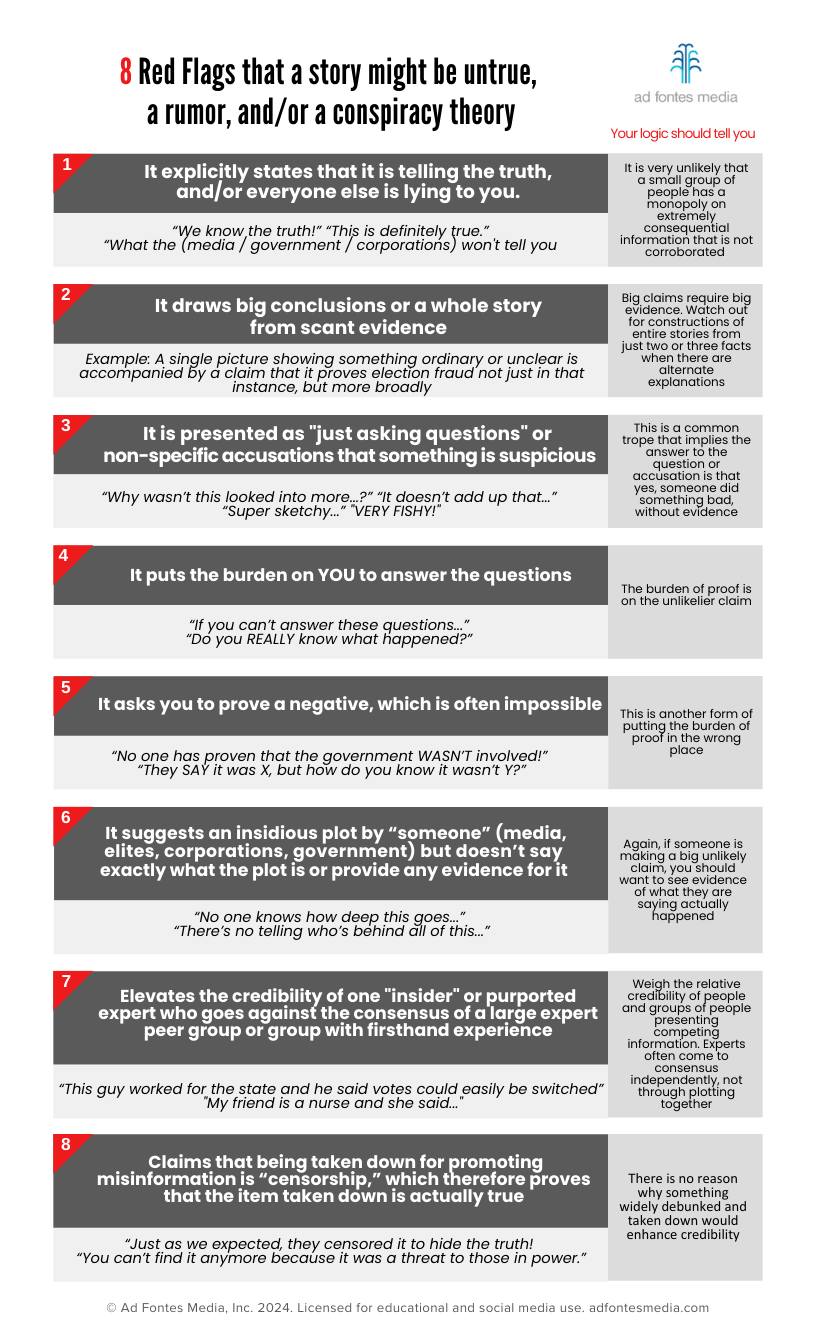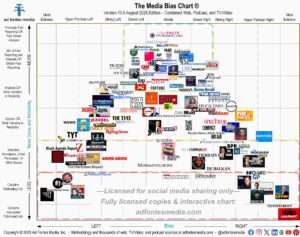
8 Ways to Know if Information Online is Untrue or a Conspiracy Theory
Author:
Vanessa Otero
Date:
11/02/2024
It’s 2024, and somehow, people still believe all kinds of far-fetched and untrue stories just because they saw them on social media. Here is our updated guide of “8 Red Flags,” which has been helpful to folks in years past.
1. The social media post explicitly states that it’s telling the truth, and/or everyone else is lying to you. (“We know the truth!” “What the media is hiding from you …”) Your logic should tell you: It is very unlikely that a small group of people has a monopoly on extremely consequential information that is not corroborated.
2. It draws big conclusions or a whole story from scant evidence. For example: A single picture showing something ordinary or unclear is accompanied by a claim that it proves election fraud not just in that instance, but more broadly. Big claims require big evidence. Watch out for constructions of entire stories from just two or three facts when there are alternate explanations.
3. It is presented as “just asking questions” or non-specific accusations that something is suspicious. (“It doesn’t add up …” “Why wasn’t this looked into more…?”) This is a common trope that implies the answer to the question or accusation is that yes, someone did something bad, without providing evidence.
4. It puts the burden on YOU to answer the questions. (“If you can’t answer these questions …” “Do you REALLY know what happened?”) The burden of proof is on the unlikelier claim.
5. It asks you to prove a negative, which is often impossible. (“No one has proven that the government WASN’T involved!” “They SAY it was X, but how do you know it wasn’t Y?”) This is another form of putting the burden of proof in the wrong place.
6. It suggests an insidious plot by “someone” (media, elites, corporations, government) but doesn’t say exactly what the plot is or provide any evidence for it. (“No one knows how deep this goes … ” “There’s no telling who’s behind all of this …”) Again, if someone is making a big, unlikely claim, you should want to see the evidence that proves what they are saying actually happened.
7. It elevates the credibility of one “insider” or purported expert who goes against the consensus of a large expert peer group or group with firsthand experience. (“This guy worked for the state, and he said votes could easily be switched.” “My friend is a nurse, and she said …”) Weigh the relative credibility of people and groups of people presenting competing information. Experts often come to consensus independently, not through plotting together.
8. It claims that an item being taken down for promoting misinformation is “censorship,” which therefore proves that the item taken down is actually true. (“Just as we expected, they censored it to hide the truth!” “You can’t find it any more because it was a threat to those in power.”) Removing something that has been widely debunked from social media does not enhance its credibility.
If you’d like to share the 8 Red Flags graphic with others, you can download it here.
Want to stay informed on all of the work of Ad Fontes Media? Sign up for our free biweekly email newsletter!
Vanessa Otero is a former patent attorney in the Denver, Colorado, area with a B.A. in English from UCLA and a J.D. from the University of Denver. She is the original creator of the Media Bias Chart (October 2016), and founded Ad Fontes Media in February of 2018 to fulfill the need revealed by the popularity of the chart — the need for a map to help people navigate the complex media landscape, and for comprehensive content analysis of media sources themselves. Vanessa regularly speaks on the topic of media bias and polarization to a variety of audiences.


